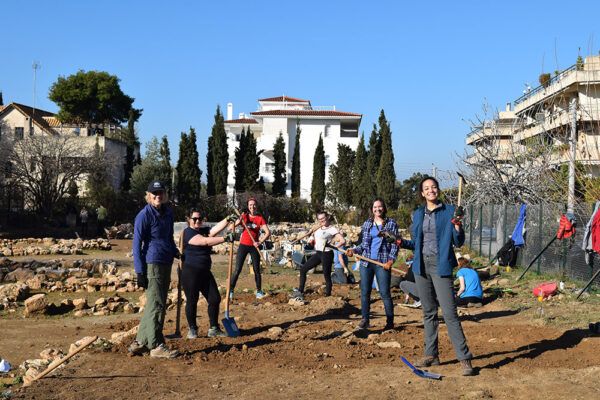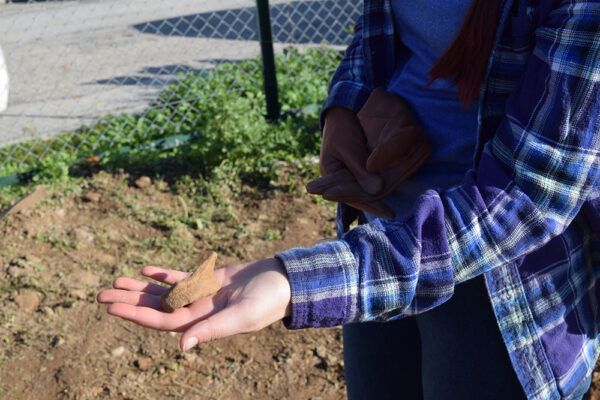
Unearthing History – Winter Voula Dig 2017
During CYA’s Winter session, students with a serious interest in Archaeology come to Athens two weeks before the start of the Spring semester to participate in a dig at a site associated with Aixonides Halai, one of the ten demes of ancient Attica, which is located in the modern town of Voula, a coastal suburb of Athens.
In early January, 2017, Dr.John Karavas, CYA professor and Excavation Director along with a team of budding student archaeologists, descended upon the site armed with shovels and picks eager to uncover new artifacts. Eftychia Lygouri, and her colleagues Maria Giamalidi and Anna Maria Anagnostopoulou of the Piraeus Ephorate of Prehistoric and Classical Antiquities directed the excavation which took place near the church of “Aghios Nikolaos Pallon,” very close to the sea and the recently discovered Agora.
The Importance of Aixonides Halai
Aixonides Halai was one of the ancient municipalities situated outside the city of Athens. The market (agora) of Aixonides Halai came to light during a rescue excavation of a plot of land that the Sklavenitis Company, a supermarket chain, intended to build on. This excavation uncovered a complex dating to the 5th-4th century B.C.
CYA students excavated the site for the first time in January 2008 under the direction of the Greek Archeological Service, it contains ruins of large ancient blocks, suggesting the presence of a large and significant public building. Excavations to date have unearthed material from the Byzantine, Roman, Hellenistic and Classical periods, including a sarcophagus, three Roman kilns and a marble lion of as yet unknown date or purpose.
Why we dig?
According, to Dr. Karavas, excavating is invaluable as we don’t have testimonials from that time. The Voula dig, immerses students in a hands-on experience of archaeology as well as the methodology of how to conduct an excavation from start to finish under the supervision of trained professionals.
This includes learning about:
- current archaeological methodology and techniques.
- the preparation and procedure that takes place before digging
- the aspects of strati-graphic excavation, material culture, artifact processing and cataloging
- how to keep an archaeological field journal
- an introduction to current artifact dating techniques
- how to illustrate findings
Our Findings
During the 2016 season, the CYA team, under the supervision of Dr. E. Lygouri, Ms. M. Giamalidi and Dr. John Karavas continued the scientifc investigation of the central section of the Agora, uncovering the remains of an 8th century Christian basilica (chapel) and yielding a plethora of material datable between the Late Roman and Early/Mid Byzantine periods; without doubt, highlighting the importance of this particular area in the social and religious life of the ancient Athenians and ascertaining its long standing and uninterrupted occupation throughout antiquity.
The 2017 session continued their focus on the area of the Agora unearthing materials and pieces of objects including a large urn and the remnants of what may have been a fire, which gives further evidence of gathering, socializing, economic transactions and other activity in the area. These findings are significant in improving our understanding of the configuration and orientation of the remaining edifices within their archaeological context. Students will have the opportunity to present their findings formally at an open assembly during this Spring semester.
- a formidable team
- The base of a cup
- what do you think?
- a handle
- An urn. The dark colour of the earth suggests remnants of a fire
See more photos on Facebook: Unearthing History Voula Dig 2017











